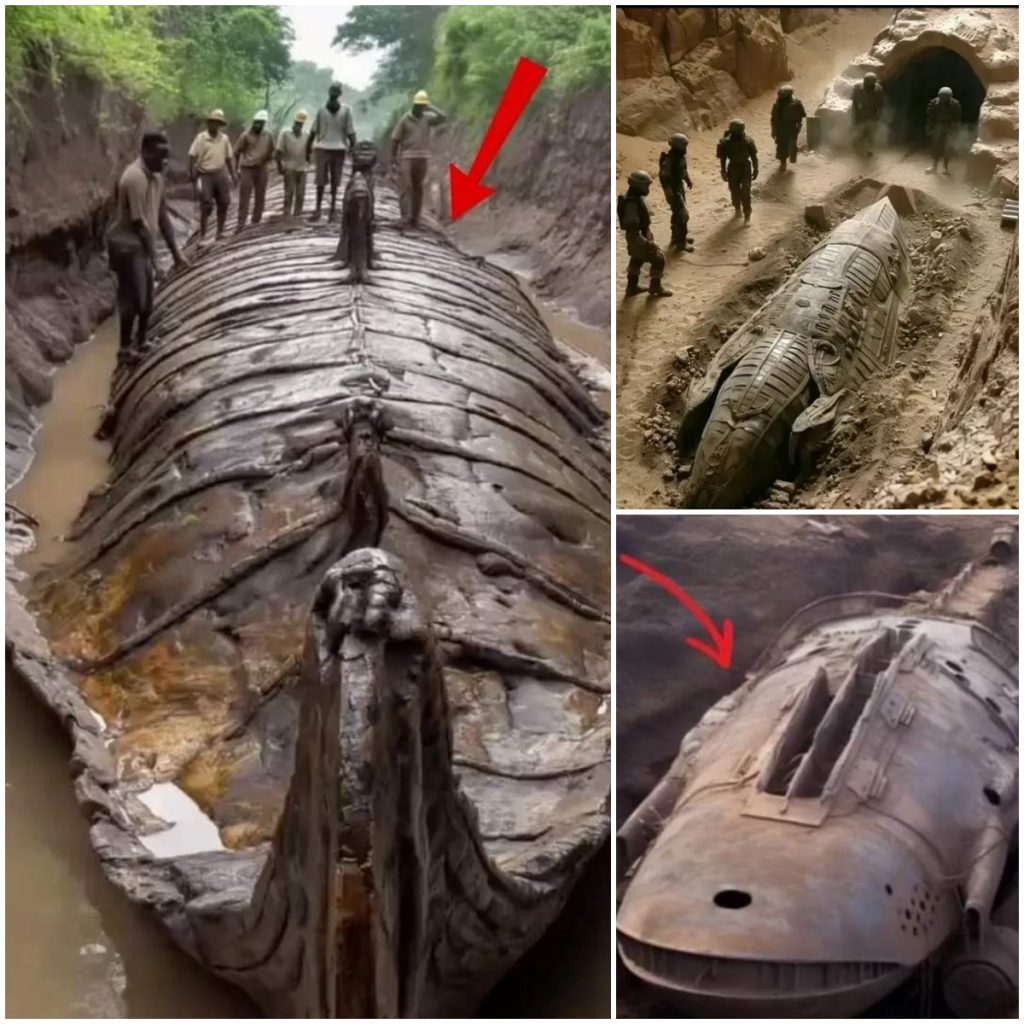Recent archaeological discoveries in Egypt and Antarctica have shocked the scientific community, suggesting the possibility that advanced civilizations visited Earth thousands of years ago. Researchers have discovered what they believe to be extraterrestrial artifacts, a groundbreaking find that challenges our understanding of human history and suggests that ancient civilizations may have had contact with beings from other planets.
In the vast deserts of Egypt, archaeologists have unearthed a collection of artifacts unlike anything previously found. These items, characterized by their advanced metalwork and intricate designs, do not match any known Egyptian crafts. Among the most surprising finds is a metal object embedded with what appears to be an unknown form of hieroglyphics, leading experts to believe it could be of extraterrestrial origin. This discovery has raised questions about the true extent of ancient Egypt’s technological capabilities and its possible interactions with otherworldly beings.
Equally fascinating are the discoveries made in Antarctica. Beneath the ice, researchers found remnants of what appears to be a long-lost structure. This discovery was initially sparked by satellite images that showed unusual formations. Upon closer examination of the site, artifacts made from materials not native to Earth were revealed. Antarctica’s extreme preservation conditions have kept these items intact, allowing for detailed study and analysis. These findings point to the possibility that an ancient, advanced civilization existed in Antarctica or visited it long before modern humans set foot on the continent.
The discovery of these extraterrestrial artifacts suggests that our ancestors may have had encounters with beings from other worlds. This challenges conventional historical narratives and opens up new possibilities for understanding the development of early human societies. The advanced technology of the artifacts implies that ancient civilizations may have received knowledge or assistance from extraterrestrial visitors. This revelation could lead to a re-evaluation of historical records and a new perspective on the origins of human innovation and cultural development.
The scientific community is divided over these findings. While some researchers are excited about the possible implications, others call for more evidence before drawing conclusions. Skeptics argue that the artifacts could be the result of natural phenomena or human activities previously unknown to modern science. Regardless, these discoveries have sparked renewed interest in exploring ancient sites and reexamining historical records. The debate continues as more data is collected and analyzed, with the potential to validate or refute these extraordinary claims.
To verify these extraordinary claims, further research is essential. Multidisciplinary teams of archaeologists, historians and scientists are planning extensive expeditions to both Egypt and Antarctica. Advanced technologies such as ground-penetrating radar and isotopic analysis will be employed to uncover more artifacts and analyze their origins. The hope is that continued studies will provide clearer evidence of extraterrestrial contact. International collaborative efforts are also being considered to ensure thorough exploration and unbiased interpretation of the findings.



